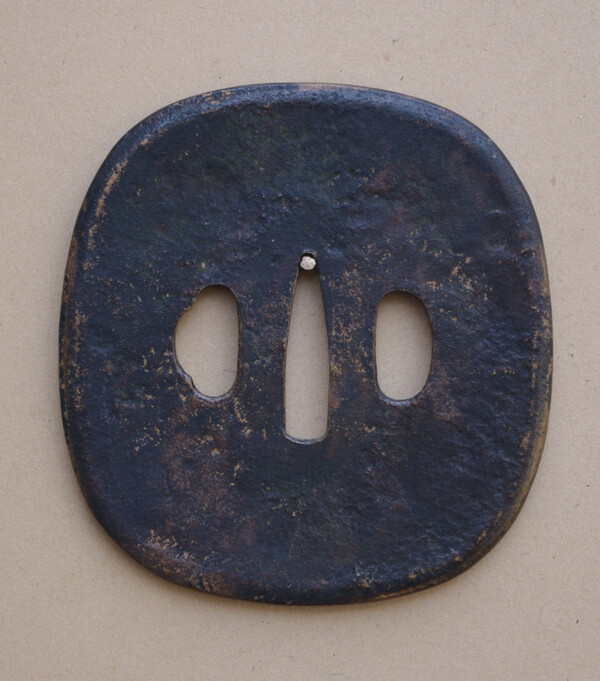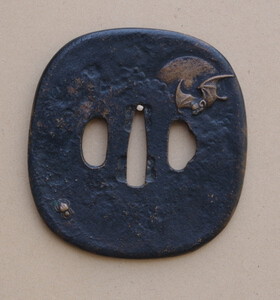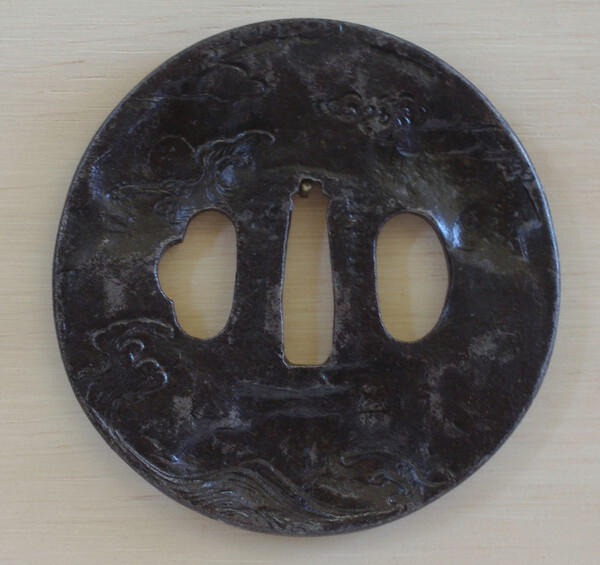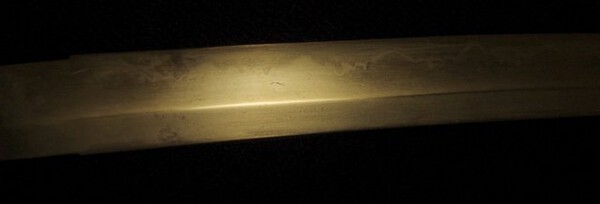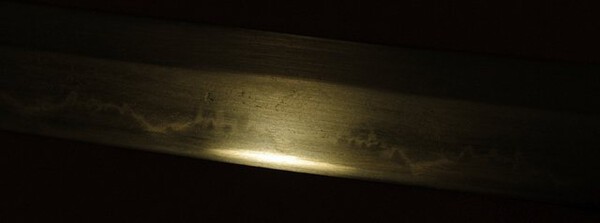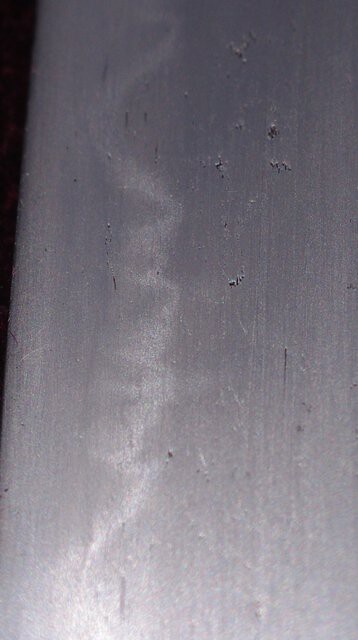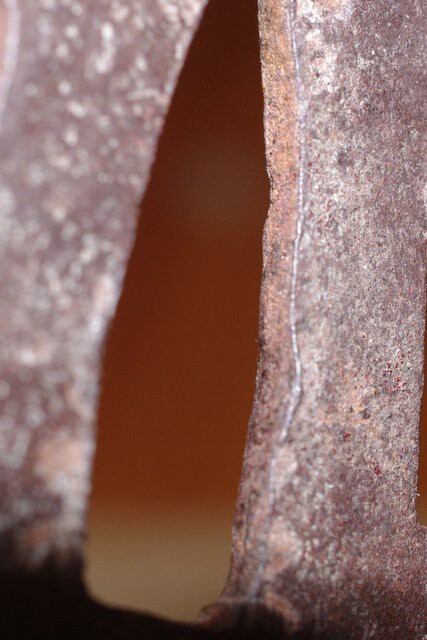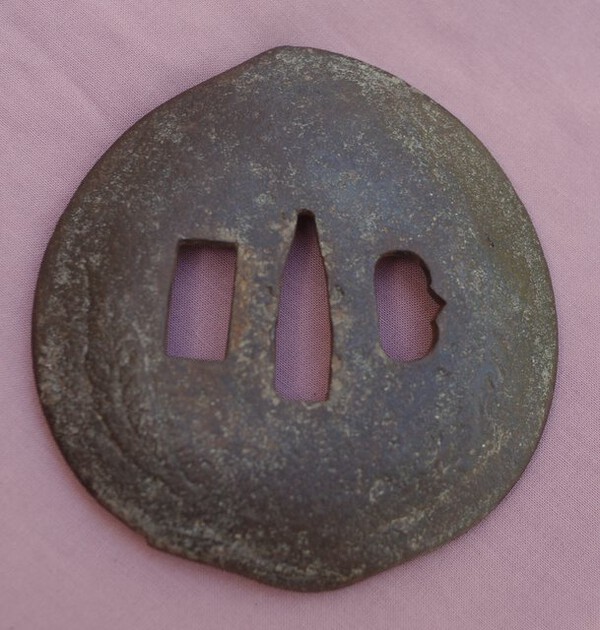
MarkB
Members-
Posts
41 -
Joined
-
Last visited
Content Type
Profiles
Forums
Events
Store
Downloads
Gallery
Everything posted by MarkB
-
-
Rather than bequeath one's collection to a local museum or to an uninformed relative, maybe the best thing is to send it back to a Japanese museum. At least you'll know that the good stuff is looked after well for future generations to enjoy. Maybe I'm being optimistic here. Another option might be to offer it for sale in Japan where again, the good stuff will be recognised. If the aim is preservation of the items, then one has to choose to pass them on to someone who will know what they have and give the due amount of care. But it goes further than that. What happens to the items when they are passed on again and again and again? How much do we care? How much will we care when we are dead? How long can things be preserved anyway when their final destination is in a fireball in the Sun? Sell or give them to visiting aliens might save them, maybe. "A spring night and with dawn on the cherries it has ended" - Matsuo Basho
-
Timur; my thought is that the alloy the tsuba is made of is called Shibuichi. More than that, I don't know much, except to say that I like it too, though my degree of liking might be influenced by the price. [edit to add another thought: There appears to be some wear to the surface patina, evident at lower left of your pic where the reddish copper colour is showing through. and this leads again to the thought of the price, but maybe it's just an artifact of the lighting]
-
Jean, thank you for your kind indulgence in answering my questions. I think I must now reluctantly come to the conclusion that my tsuba is a cast metal copy [edit: for copy, read fake]. I have a few other tsuba which I inherited from my father, I'll have a closer look at all of them and see what other shocks lie in store for me. Best regards, MarkB
-
I have been reading old threads on this board and searching the internet for info on a feature which has puzzled me for some time, but I still have no answer. The question is, What is the significance of those minute iron spherules I sometimes see on the surface of tsuba? They can be seen in the above close-up of the hare (at least, I hope they can). I am aware of looking for pin holes and die marks, but the other methods of identifying cast iron I have read about are destructive, involving grinding and observing the colour of the sparks or striking with a hard object to induce a shattering of the metal, none of which I want to try on my suspect tsuba.
-
A few close up pics (under arificial light because it's been raining all day here) I am interested if anyone thinks this is a cast metal or a hand-worked piece.
-
Point taken. I live in South Australia. The so-called driest state in the driest continent. What is preferable; to oil one's tsuba and blades or to care for them so that rust doesn't form? It's a big responsibility to own swords or tsuba as we are custodians of them for future owners custodians. Oiling carries its own perils. Clean and dry demands careful attention but carries few risks. What to do for the best?
-
Oiling a tsuba? Oiling produces an artificial sheen and can contribute to a deterioration of the steel surface over time. That's what I have read and that's what I believe to be true. Surely there's no division of thought on this amongst the cognoscenti ? Oiling of blades is also anathema to me. Why apply an oil which will distort and interfere with the visual appearance? After all, appreciation of nihonto is purely a visual thing since one should not touch them. They are not tactile objects like netsuke, for example.
-
Jean, please don't wince, but I just tested the surface with a bit of acetone on a tissue. Nothing happened. Not even a slight stain on the tissue paper. Same result when I tried this with mineral turpentine. No change to the surface, either.
-
Thanks again, Jean I don't see any of the tell tale signs of casting on this tsuba. No pinholes and no mold marks in the mimi. I'll post some (hopefully, in focus) close ups of the metal tomorrow if the sun is shining. I thought the waves might be etched and the hare carved, but as you say, it's difficult for others to form an opinion from just photos.
-
Hi Jean, It's very strongly magnetic [edit: actually, it is not magnetic, but a magnet is strongly attracted to it.] . I agree, it's an odd colour. Under the lacquer, it looks grey. I think overall, it's bit of a rough piece of work, but I do like it anyway. The surface displays those large hammered depressions and the seppa dai only has a very little of it's original thickness left, having been struck many times to make it fit either various swords, or a sword which has seen many polishes. Any idea of the ages?
-
Two tsuba for your consideration. I am curious about the ages and the schools. I believe they both refer to the story of The hare of Inaba. Any other comments or info is, of course welcomed (yes, even the adverse ones) (apologies for the poor photos) The first is 79 mm wide X 81 mm high X 4 to 5 mm thick at the rim and 5mm thick at the seppa dai. Wt is 125 g. It has been lacquered black and is worn in some places, showing grey steel beneath the lacquer. The second is smaller, at 65mm wide X 69mm high X 4mm thick at rim and 5mm thick at the seppa dai. Wt is 90g. It is a russet brown colour. Regards, and thanks for a great board. Mark B
-
I've never liked the look of a burnished shinogi ji or mune. I think it is distracting and may conceal some details. I'm sure I read somewhere once a quotation about swords which says something like. 'They shouldn't be too flashy or shine too brightly at night.' So, I wonder- was it always common practice to burnish, or were swords left unburnished at some time/s in the past?
-
Japanese Military and Civil Swords and Dirks
MarkB replied to LakeBum's topic in Military Swords of Japan
I have a copy of this book in very good condition. I found it very informative and interesting. Who knows how much it is worth? I guess it's a combination of factors: How much money does a person have and how great is their desire to acquire? pm me if you like and we can haggle. -
Thanks for your opinion, Chris Alan, the nakago looks as if it had been partly sawn through, with the remainder roughly broken off. I can't see any evidence of heating. It's had a long and maybe rough life, but even being polished down this much, there seems to be no large ware. I'm not thinking of having it polished any further.
-
This is a katana (maybe used to be a tachi) which was found mounted in tourist-style but old, bone mounts. I was surprised to discover a decent blade in such mounts. the mounts were sold off long ago but my father kept the blade. What do you think of it? The ura and omote sides have different hamon patterns. I can't see the hada or boshi due to condition. nagasa: 68.5 cm nakago: 14 cm (tori) sori: 1.7 cm mihaba: 3 cm sakihaba: 2 cm at mune machi: 0.4 cm at mekugi ana: 0.5 cm weight: 528 g
-
It's a puzzle for me too, Ford. I thought the peach leaves were produced by acid etching as they look too shallow and superficial to have been carved. I see no obvious markings of wear on the seppa dai to suggest this tsuba has been mounted and used over a long time. Though the tsuba gives me the impression of age. The distortions on the edges of the nakago ana seem to contradict its being cast iron (unless of course, they have been cast like this) The iron plate does not exhibit the porousness which would cause me to suspect cast iron. It gives a high-pitched ringing tone when balanced on the finger and flicked with my fingernail. it is not magnetic. I never thought this was a high-end piece, but then again, I quite like rusty old iron. Thanks again for your opinion, Ford. I am beginning to think your first impression is correct.
-
-
I'd also advise to try to knock out the mekugi/s using a wooden drift. I'd even consider destroying the wooden tsuka rather than risking damage to the nakago by using a steel drill. Tsuka are replaceable, drill-damaged nakago are irretrievable.
-
Thank you for looking, Ford and I value your opinion. I'll try to get better pics in the daylight tomorrow. This is one I took just now under poor room lighting.
-
-
I would approach this problem by trying to dig out the lacquer covering the apparent mekugi ana using a sliver of bone for example, but not using a metal tool or a drill. Then if later you discover the tsuka has been glued on using an epoxy resin like Araldite, then I would place the tsuka in a jar of e.g Dimethylformamide overnight; this will flake and soften the epoxy glue. My father once removed a tsuka this way (though I am not exactly sure what he used, but I know it was an organic chemical solvent). His tsuka was fully wrapped incl menuki etc. This method did not damage the ito, nor the same nor affect the finish of the menuki or kashira, and he was able to gently tap the tsuka off the nakago, and being an organic solvent, it evapoated without leaving residue. (solvents for non-epoxy glues might leave a sticky mess, so be careful what you use) I found a website advertising epoxy solvents among others. http://www.dynaloy.com/products/epoxy Their product is called Dynasolve. caveat: I haven't tried this product. Best of luck.
-
Thanks again, Junichi. it seems that my poor old tsuba has seen better days. I have a couple more tsuba featuring brass inlay, Heianjo style. I'll try to get some pics of them and post them in another thread in a few days time.


